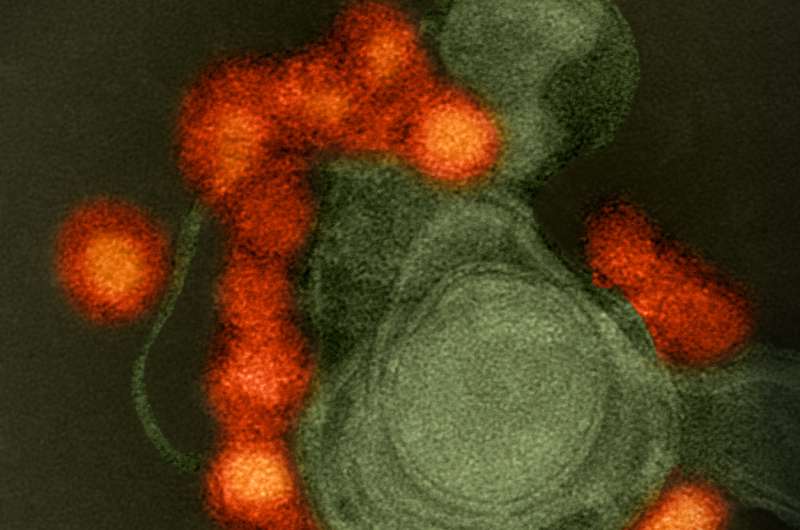Zika virus-specific therapy protects the fetal mouse brain


A gene-silencing therapy protected against Zika virus transmission from pregnant mice to the mouse fetuses, finds a study published November 10th in the journal Molecular Therapy. The treatment, which harnesses nanoparticles called small extracellular vesicles (sEVs) for drug delivery, crossed the placenta and blood-brain barrier to greatly reduce fetal neurological damage, including virus-induced brain shrinkage.
“Our experiments indicated that targeted delivery via modified sEVs is a promising alternative to the traditional methods of delivery, especially for the treatment of brain viral infection,” says senior study author Zhiwei Wu of Nanjing University. “Increasing the yield and efficiency of producing sEVs and developing sEVs that target other tissues will broaden their application and will expand the effectiveness of this gene delivery technique.”
The Zika virus epidemic swept across the Asia-Pacific region in 2015-2017 and remains a global health threat to this day. The virus causes neurological and congenital conditions such as microcephaly, in which the baby’s head is smaller than expected. It can cross the placenta and the blood-brain barrier—a network of blood vessels and tissue that is made up of closely spaced cells.
The blood-brain barrier controls the exchange of substances between the central nervous system (CNS) and the blood, helping to keep harmful substances from reaching the brain. Few drugs specifically target brain tissue, and most are highly toxic and do not efficiently cross the blood-brain barrier. Treatment for viral infections of the brain is generally ineffective due to blood-brain barrier blocking of drugs. “Currently, there is no Zika virus-specific therapy or vaccine available,” Wu says. “Safe and effective antiviral drugs that can effectively cross the blood-brain barrier and placental barrier are urgently needed, especially to prevent microcephaly.”
In particular, gene silencing therapies using oligonucleotides have demonstrated unique advantages in clinical settings, but the delivery of nucleic acids into cells remains a major challenge. One potential solution is offered by sEVs—natural, biodegradable nanoparticles that are released from cells and are important mediators of cell-to-cell communication. Emerging evidence suggests that they could be a powerful tool to deliver drugs for the treatment of cancer, cardiovascular conditions, and infectious diseases. Recently, Wu and his collaborators leveraged sEVs to deliver an antiviral molecule across the placental barrier to inhibit Zika virus infection in the mouse fetus.
In the new study, Wu and his team demonstrated for the first time that sEVs could deliver antiviral drugs to achieve targeted suppression of Zika virus infection in the fetal CNS and to control neurological damage. To home in on neurons, the researchers engineered sEVs that expressed rabies virus glycoprotein (RVG) on their surface. They then loaded them with Zika virus-specific small interfering RNA (siRNA) and injected them into pregnant mice.
The RVG-modified sEVs crossed the placental barrier and blood-brain barrier, protecting against Zika virus transmission to the fetus. They concentrated in the fetal brain, where they suppressed infection and reduced inflammation and neurological damage, including microcephaly and defects in a brain region called the cerebellum. The findings echo another recent study showing that RVG-modified sEVs could cross the blood-brain barrier in mice to treat manifestations of Parkinson’s disease. “Our therapeutic approach expanded the application of sEVs to treat viral infection of brains by intravenous injection,” Wu says.
Despite the promising results, many questions remain. For example, the researchers delivered the virus and the first dose of the therapy simultaneously, so it is not clear whether treatment after a time lag would also be effective. “A delayed injection after viral infection may provide more confidence in the ability to translate this research to human trials,” Wu says. “Nevertheless, our study provides a proof of concept for such a possibility.”
Source: Read Full Article